Explore the Most Advanced, Agile, and Super Accurate Supersonic Cruise Missile in India! Delve into the Best of the BrahMos Missile in Detail, Providing Unbreakable Strength to All Three Armies. It is the Best Dominating Cruise Missile in the Asian Region.
BrahMos Cruise Missile Leads with Precision and Power The Indo-Russian BrahMos missile stands as a formidable testament to international collaboration in defence technology. Named after the Brahmaputra and Moskva rivers, this supersonic cruise missile is a product of joint development between India and Russia.
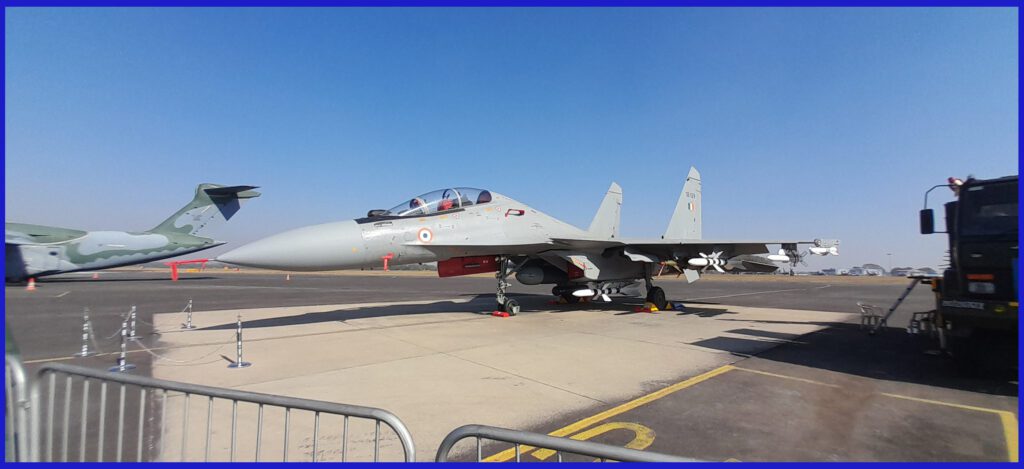
The BrahMos missile results from a collaboration between the Indian Defence Research and Development Organisation (DRDO) and Russia’s NPO Mashinostroyeniya, jointly forming BrahMos Aerospace.
Derived from the P-800 Oniks, this missile showcases exceptional speed, reaching Mach 3, and demonstrates precise targeting capabilities with a range of up to 500 km. Its versatility extends to engaging land and naval targets, establishing it as a powerful asset for the armed forces.
The missile’s success is attributed to advanced technology, incorporating high speed, a low-flying trajectory, and evasive manoeuvres, making interception by adversaries challenging. As one of the world’s fastest cruise missiles, the BrahMos symbolizes strategic cooperation, providing India and Russia with a significant advantage in modern warfare.

The BrahMos missile leads its class with the maximum engagement radius and minimal deployment time, coupled with cutting-edge network-centric capabilities. Currently in active service are the land-launched and ship-launched versions, complemented by the air-launched variant designed for the Su-30MKI, which became operational in 2019.
The BrahMos-II missile is presently undergoing development in a hypersonic configuration, featuring a top speed of Mach 7-8, intending to enhance aerial quick-strike capabilities. Testing for this iteration is scheduled to commence by 2024. In a collaborative effort, India and Russia are working to develop a new generation of BrahMos missiles, boasting an extended range of 800 km.
This cooperative initiative is driven by India’s inclusion in the Missile Technology Control Regime (MTCR) in 2016, granting the missiles the capability to target protected locations with pinpoint accuracy. The overarching strategy includes the comprehensive upgrade of all missiles to achieve a range of 1,500 km.
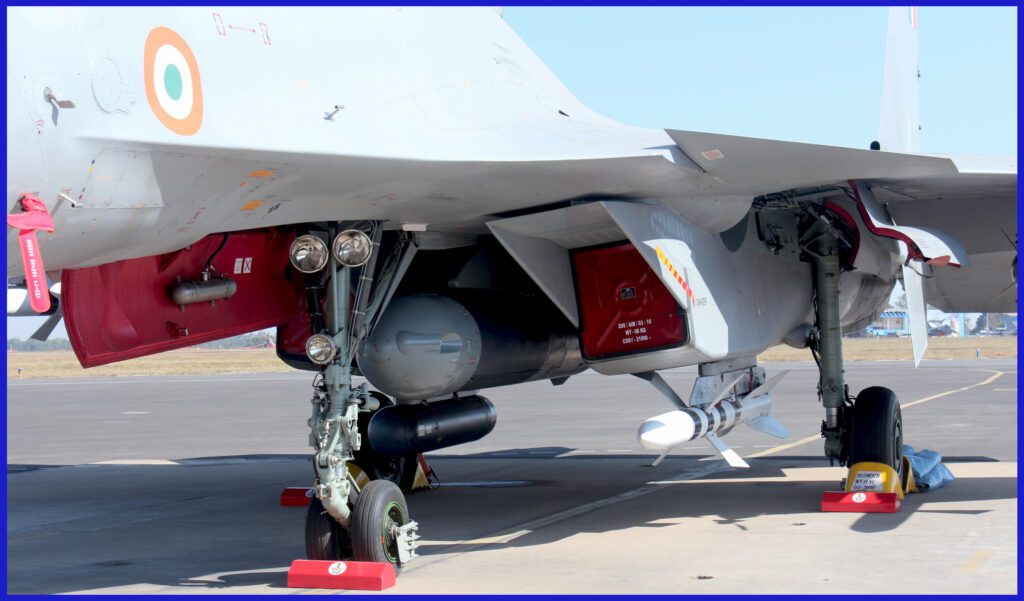
In Short: BrahMos Test Phase Overview
BrahMos underwent its inaugural test on 12 June 2001 at the Integrated Test Range (ITR) in Chandipur, Odisha, employing a vertical launch configuration. A subsequent test took place on 14 June 2004 at ITR, where BrahMos was launched from a mobile platform.
The BrahMos Block-I, tailored for army use, underwent successful testing with upgraded capabilities in the deserts of Rajasthan, near Pokharan, in December 2004 and March 2007.
However, a user trial on 20 January 2009 resulted in a failure to hit the target due to a navigation system malfunction. Fortunately, the research team promptly resolved the issue, leading to two subsequent successful tests on 4 March 2009 and 29 March 2009.

The army expressed satisfaction with the missile, marking the culmination of the development phase of BrahMos Block-II.
On September 5, 2010, the BrahMos test achieved a global milestone by becoming the first cruise missile to undergo testing in a steep-dive mode at supersonic speeds. The missile was launched for the first time from the launching complex-3 (LC-3) at Chandipur’s integrated test range around 11:35 a.m.
This launch successfully addressed the Indian Army’s requirement for Block-II enhanced seeker software, featuring target-discriminating capabilities for land attacks. BrahMos stands out as the sole supersonic cruise missile equipped with the sophisticated ability to select a specific land target from a range of targets, providing users with a precision advantage in hitting their target.
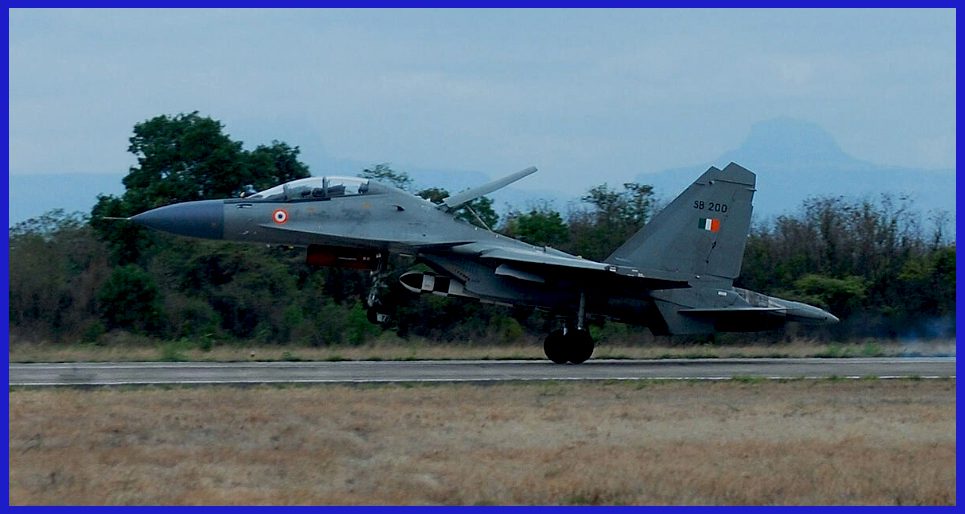
Block III features steep dives from high altitudes and incorporates multiple high maneuvers, alongside updated software and enhanced guidance capabilities. The utilization of this technology is planned for Arunachal Pradesh.
This version can execute precise strikes on ground targets with minimal collateral damage, even as low as 10 meters in the air. It is adaptable for launch from various platforms, including land-based Mobile Autonomous Launchers (MAL), ships, submarines, and aircraft.
On September 30, 2020, India successfully conducted a test flight of an upgraded BrahMos, showcasing a range of approximately 350 km and an increased top speed of Mach 2.8—significantly surpassing the original 290 km range.
The test was conducted using an indigenous booster as part of the Defence Research and Development Organization’s (DRDO) BrahMos project. Launched from a land-based installation in Odisha, this marked the second test launch of the extended-range variant of the missile, notable for featuring an airframe and rocket manufactured within the country.

Diverse Platforms of the BrahMos Missile System
Land-Based BrahMos Weapon System
The land-based BrahMos system utilizes highly mobile autonomous launchers (MAL), capable of carrying up to three missiles. These launchers are controlled by a Mobile Command Post (MCP) and a Mobile Replenishment Vehicle (MRV). The MAL functions as an autonomous vehicle with its own communication, power supply, and fire control system.
Three BrahMos missiles, housed in three independent containers, are installed on the MAL, allowing for firing at three different targets or in various combinations almost simultaneously.
The land-based version is equipped with an Inertial Navigation System (INS) and Global Positioning System (GPS) and uses Active Radar Homing in its terminal phase. The launchers are designed for swift deployment and can be easily transported across diverse terrains, enhancing the system’s flexibility.
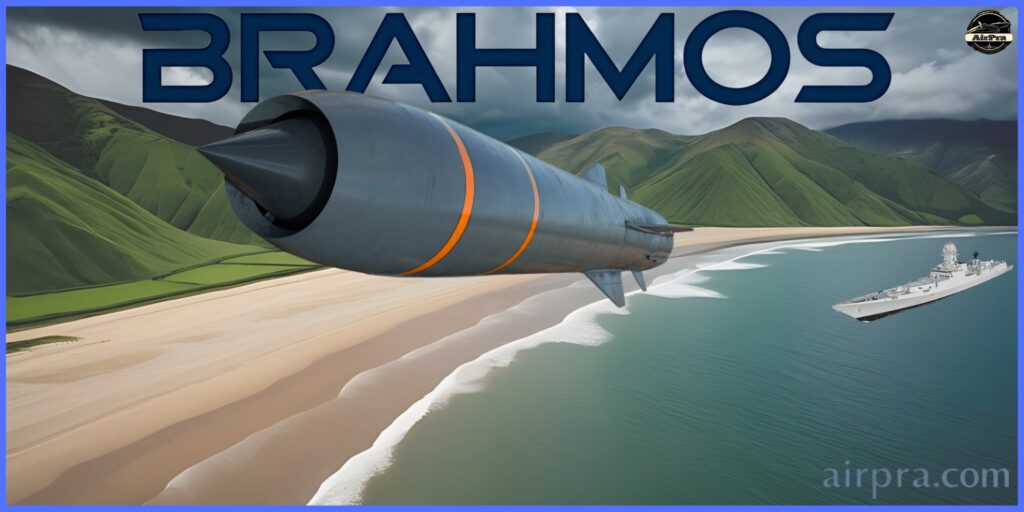
The system is engineered to engage a variety of targets, including enemy ships, land-based targets, and infrastructure, with high accuracy.
A new navigation system incorporates an Indian microchip called G3OM (GPS, GLONASS, and GAGAN on a module). It utilizes navigation satellites from the US, Russia, and India, ensuring accuracy within five meters, with a weight of approximately 17 grams.
When coupled with an inertial navigation system (INS), this integrated system can achieve high-accuracy aiming without the need for a seeker. The BrahMos system underwent its initial test on March 22, 2018, and was further tested on September 30, 2019, incorporating an Indian-developed propulsion system, airframe, and power supply.

Ship-Based BrahMos Weapon System
The BrahMos missile exhibits the capability to engage targets, both at sea and on land, beyond radar horizons. Its launch configuration can be either inclined or vertical, tailored to the specific ship or user requirements.
Employed as the primary strike weapon on the frontline surface combat platforms of the Indian Navy, including destroyers and frigates, the missile has demonstrated its effectiveness. Notably, on March 5, 2008, the land attack variant was successfully deployed from the destroyer INS Rajput, accurately destroying the designated target within a group.
Following this, a vertical launch from INS Ranvir took place on December 18, 2008. Over time, the missile has undergone successful testing from various Indian Naval Ships, including INS Delhi, INS Chennai, INS Kolkata, and, most recently, from the Indian Navy’s latest indigenous stealth-guided missile destroyer, Imphal, achieving precise targeting during its inaugural BrahMos firing at sea in November 2023.

Submarine-Based BrahMos Weapon System
The BrahMos missile demonstrates the capability to be launched from a submarine at depths ranging from 4 to 50 meters. It is integrated into a modular launcher positioned vertically within the pressure hull of the submarine, maintaining an identical configuration to the ship-based system.
The submarine-launched BrahMos variant underwent its inaugural successful test firing from a submerged pontoon near Visakhapatnam, along the coast of the Bay of Bengal, on March 20, 2013. This marked the pioneering vertical launch of an Indian supersonic missile from a submerged platform.
In late January 2016, Russia officially confirmed that forthcoming Indian-made submarines would be equipped with a smaller version of the missile designed to fit inside a torpedo tube.

Air-launched BrahMos-A Weapon System
For the Indian Air Force’s (IAF) front-line Sukhoi SU-30MKI air combat platform, a highly advanced Air-Launched Cruise Missile (ALCM) has been designed and developed with precise attack capability against sea and land targets.
The BrahMos ALCM stands as the most formidable and substantial armament integrated into the IAF’s ultra-agile multirole fighter. Functioning as a standoff weapon, the modified BrahMos-A missile boasts a range of 500 km when launched from the air.
Several modifications were implemented, including repositioning the connector, adding fins for airborne stability post-launch, and utilizing a smaller rocket to reduce the missile’s weight to 2.55 tonnes. It can be released from altitudes ranging from 500 to 14,000 meters.

The missile accelerates to supersonic speed after free-falling for 100–150 meters upon release. Sudhir Kumar Mishra, CEO of BrahMos Aerospace, suggests that, given the range of the launch aircraft, BrahMos-A may reach targets thousands of kilometres away.
At its facility in Nashik, Hindustan Aeronautics Limited (HAL) modified the Su-30MKIs, which now belong to the Indian Air Force. These modifications will also be integrated with the missile’s aerial launch system. The first successful test firing of the missile against a sea-based target in the Bay of Bengal occurred on November 22, 2017, from a Sukhoi-30MKI.
With the successful testing of this kind of air-launched supersonic missile against a sea-based target, the Indian Air Force became the first in the world. On December 17, 2019, the integration of BrahMos-A with the Su-30 MKI was officially completed, following successful tests on all parameters against a sea-based target.
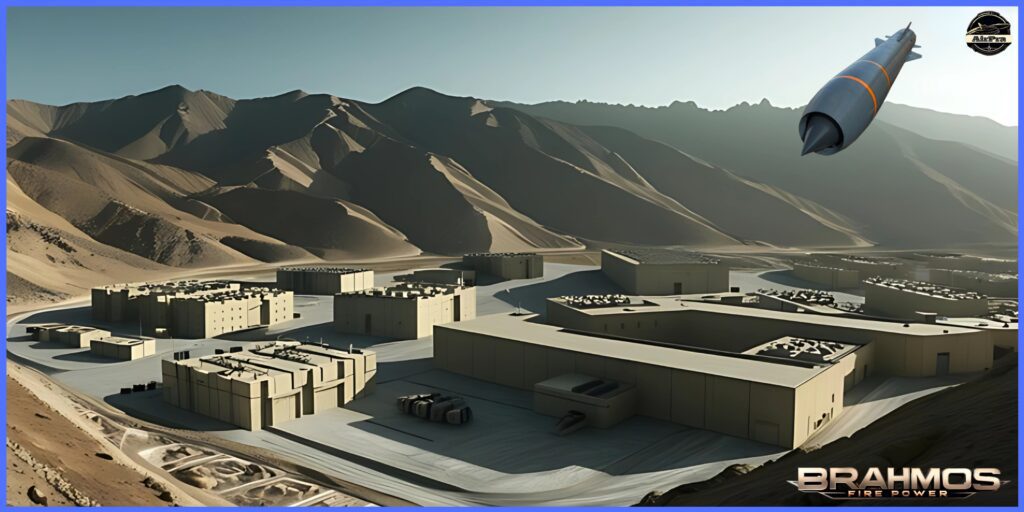
The BrahMos-A missile was initially fitted to 50 IAF SU-30MKI vehicles with modifications, including the addition of electronic circuits resistant to nuclear electromagnetic pulses. However, all SU-30s will eventually be upgraded to carry these armament systems.
The Indian Air Force (IAF) commissioned its first Su-30MKI fighter squadron equipped with the BrahMos-A missile on January 20, 2020, with intentions to acquire more than 200 of these missiles.
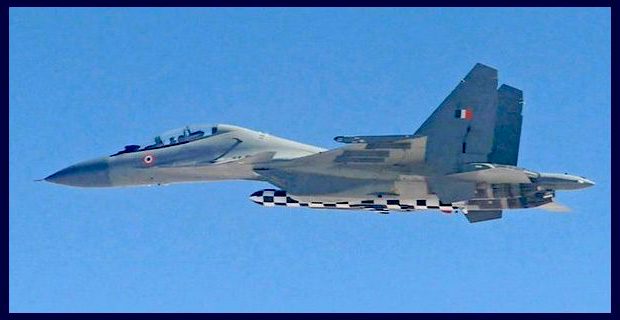
The Characteristics Of BrahMos Missile
- Long Flight Range
- High Supersonic Velocity
- Varieties Of Flight Trajectories
- ” Fire & Forget ” Principle
- Low Radar Signature
- Simplicity Of Technical Operations
- High Lethal Power
- Higher Effectiveness
BrahMos Missile Specifications
- Weight: 3000 kg (6,600 lb) Land & Ship version / 2500 kg (5,500 lb) Air version
- Length: 28 ft ( 8.4 m )
- Diameter: 2 ft ( 0.6 m )
- Engine: 1st Stage: Solid fuel rocket booster and 2nd Stage: Liquid fuel powered Ram jet
- Range: 500 km (310 mi) / and For Export version 290 km (180 mi) as per MTCR
- Warhead: 200 to 300 kg (440–660 lb) nuclear/conventional semi-armour-piercing warhead
- Service ceiling: 15 km (49,000 ft)
- Flight altitude: 3 to 4 meters minimum height for Sea skimming
- Maximum speed: Mach 3
- Guidance system: Mid-course_ INS and Satellite navigation / Terminal_ Active radar homing
- Launch Platforms: Land-based TEL (Transporter Erector Launcher), Warship, Submarine, and Air-Launched

BrahMos-II and BrahMos NG: The Next Chapter in Advancing Cruise Missile Superiority
BrahMos-II: an advanced iteration of the Indo-Russian BrahMos supersonic cruise missile, represents a pinnacle of technological achievement. Currently undergoing joint development by India’s Defence Research and Development Organisation and Russia’s NPO Mashinostroyenia, with ambitions to achieve unparalleled speeds ranging from Mach 5 to 8, BrahMos-II is expected to boast a range of 1,500 kilometres (930 mi).
This hypersonic missile is designed for precision strikes, incorporating advanced guidance systems and stealth capabilities. Its high-speed manoeuvrability and ability to penetrate enemy defences make it a formidable asset for modern warfare, bolstering India’s strategic capabilities and serving as a symbol of successful international defence collaboration.
BrahMos NG: The rapid progression of military technology globally has paved the way for the development of another cutting-edge weapon—the BrahMos NG (Next Generation). While BrahMos maintains its status as the premier and fastest cruise missile system worldwide, the BrahMos NG, inheriting the outstanding pedigree of its predecessor, is poised to become one of the most effective weapon systems in the future. The system will feature an AESA radar instead of the mechanically scanned array radar.
With enhanced versatility, lethality, flexibility, and precision, the BrahMos-NG is designed to be a more intelligent, smaller, and lighter weapon system suitable for installation on a variety of military platforms, including airborne and naval ones.
The BrahMos-NG will be three meters shorter and fifty per cent lighter than its predecessor, maintaining the same 290-kilometre range and Mach 3.5 speed but weighing about 1.5 tonnes and measuring six meters in length and fifty centimetres in diameter.
The system is anticipated to be operational by 2024. Due to its smaller radar cross-section (RCS) compared to its predecessor, air defence systems will face greater challenges in locating and engaging the target. BrahMos-NG will be available in land, air, ship-borne, and submarine tube-launched versions.
The missile is intended to arm a range of aircraft, including the Sukhoi Su-30MKI, Mikoyan MiG-29K, HAL Tejas, and future inductions such as the Dassault Rafale, HAL Tejas Mk-II, and TEDBF. Additionally, a submarine-launched variant is currently under research and development.
The system is anticipated to be operational by 2024. Due to its smaller radar cross-section (RCS) compared to its predecessor, air defence systems will face greater challenges in locating and engaging the target.
Important Characteristics of BrahMos-NG include:
- Reduced Dimension and weight for widespread usage
- Advanced next-generation stealth
- Greater effectiveness against ECCM
- Higher versatility in underwater combat applications
- Launch readiness from Torpedo tube and vertical canisters

Alongside this article, seize the exclusive opportunity to acquire premium-scale diecast models of legendary Russian fighter jets, including the Sukhoi SU-57 Felon, SU-30SM Russian Knights, Sukhoi SU-34 Fullback, and Mikoyan MiG-29 Fulcrum.
Available only at Air Models, these remarkable and iconic long-range military fighters boast impeccable track records and are now purchasable on AirModels with worldwide delivery. Click here now to secure your piece before the limited stock is depleted.

In conclusion, the BrahMos stands as a testament to the relentless pursuit of innovation and cooperation in defence technology. Born from the collaborative efforts of India and Russia, this hypersonic marvel redefines the boundaries of missile capabilities.
With its exceptional speed, range, and precision, BrahMos not only enhances India’s defence capabilities but also symbolizes the strength of international partnerships in addressing evolving security challenges.
As a beacon of technological prowess, it highlights the potential for nations to pool their expertise, fostering a safer and more secure global landscape. The BrahMos stands at the forefront of advancements, reflecting the shared commitment to excellence in the ever-evolving realm of defence.
Important Announcement for Our Valued Readers!
After an article is published, it is possible that updates or changes may have occurred beyond the time of publication. Therefore, it is important to be aware that certain information in the article might be outdated. To ensure the most accurate analysis, it is highly recommended to verify the content with the latest sources available.
However, we are dedicated to delivering outstanding articles on military products and global updates. Maintaining quality and smooth operation requires resources. Your support sustains our efforts in providing insightful content.
By purchasing high-quality products through our affiliated links, you help us keep our platform alive and acquire top-notch items. Your unwavering support is invaluable and inspires us to strive further.
We welcome your suggestions and requests for more information, as we value feedback from our readers. If there’s specific defence material or equipment not covered on our site, please share your request in the comments.
We’ll strive to research and provide the required information. We sincerely thank you for your unwavering interest in our website, and we eagerly anticipate hearing from you! Enjoy your reading experience!
